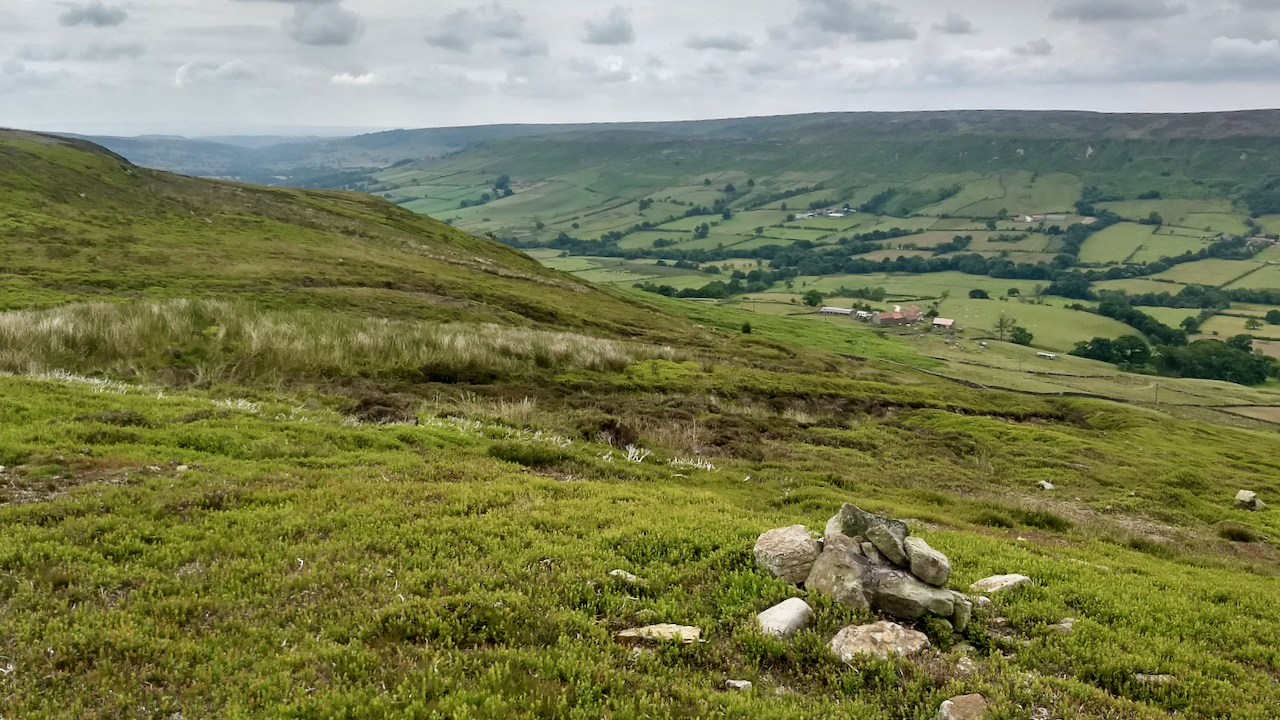I haven’t really had much to do with upper Farndale. I’ve used the old mineral railway track many times, Rudland Rigg on the far side less so, but actually being in the upper dale, I can only think of a couple of occasions, crossing it directly. There are no footpaths along the dale. Of course, I’ve seen the daffodils a few times, but they’re below Church Houses.
Whenever I see upper Farndale, my mind always falls back on the effect on the dale had the scheme to build a reservoir by Hull Corporation come to fruition.
In 1932, the Corporation brought all the 1,917 acres of the dale above Church Houses from the Earl of Feversham with a view to securing a water supply for the City of Hull. 26 tenanted properties were included, the homes and farms of 100 people. Just two of these farms were below the proposed water level but the remaining would have had to have been demolished to avoid contamination and additional water treatment costs. The dam wall would have been just up from Church Houses, but the hamlet would have been fundamentally changed forever. The water catchment would have been increased by feeding through tunnels from Bransdale and Rosedale.
I reckon the water level would have followed the 170m contour, about the height of the present road along the east of the dale, a good field below Hill Houses, the farm nearest the camera, but which would have been demolished.
On the west side, the water would be lapping the farms of Broom Hill, Shotten Hill, and Eller House (centre to extreme right in the photo). I think about half the dam wall would have been visible from this viewpoint (hard to describe but just left of centre).
In the event, the 1930s scheme was not followed and the farms remained tenants of Hull Corporation. Another attempt to revive the scheme happened in the late 1960s by the Yorkshire Ouse & Hull River Authority, but again, with greater public opposition, this was thankfully unsuccessful.
Hull Corporation eventually transferred their estate to Yorkshire Water Authority in 1974, who subsequently ‘promised’ the tenants of Farndale they could buy their farms. Contracts were signed, and deposits paid, but when Mrs Thatcher came to power in 1987, one of her first acts was the privatisation of Yorkshire Water, and under the privatisation protocol they could only sell to the highest bidder. And that bid came from Lawrie Barratt, Britain’s largest house builder, who had already brought the remainder of the Feversham estate in lower Farndale. Barratt allegedly offered double the price of the sitting tenants.
In spite of Barratt being a very public supporter of Mrs Thatcher (an headline in the Observer ran “Gazumped by Mrs T’s man”), the Environmental Secretary Nick Ridley eventually, after much procrastination, used an exception clause in the protocol to allow Yorkshire Water to accept the tenants bid.
I wonder if the outcome would have been different under today’s Government.
Source: Eccleston, Brian. “Farndale Reservoir Twice Derailed”. York Publishing Services. 2020. ISBN 978-0-9573296-4-5.

Leave a Reply